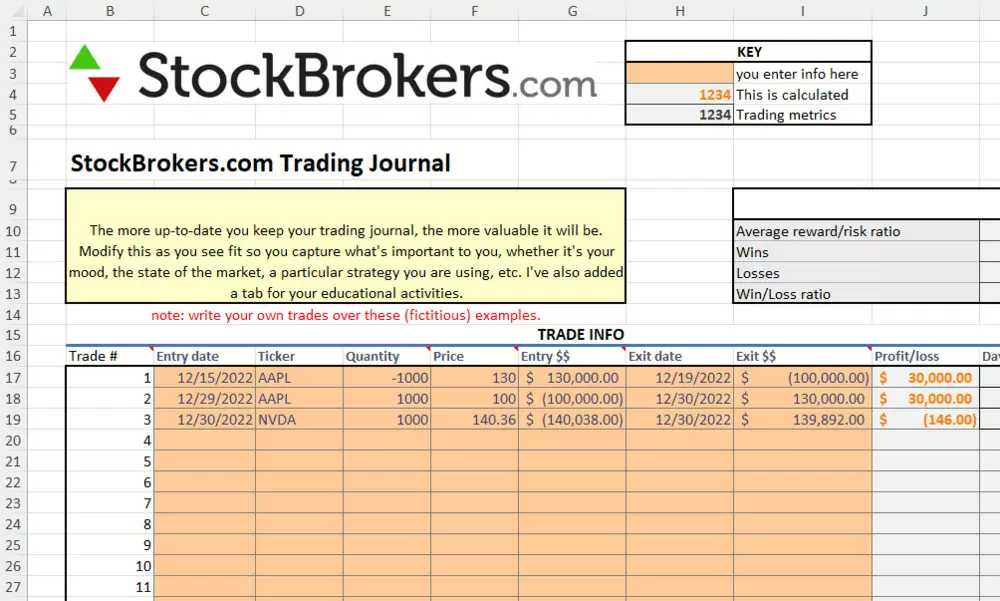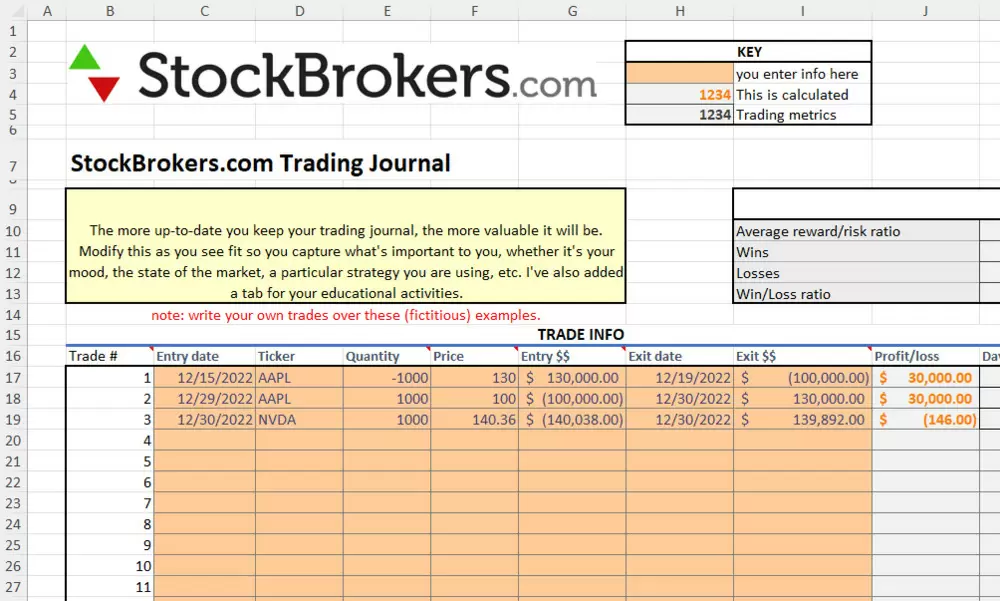Did you know that the average person forgets 80% of what they learned within a month? Now, imagine trying to remember your trading decisions without a journal! In this article, we dive into the essentials of keeping a day trading journal, outlining its significance in tracking your trades and enhancing your decision-making process. You'll learn how to start your journal, what to include, and the best formats to use. We also explore the tools that can help you maintain it effectively, how to analyze your performance, and the common pitfalls to avoid. By incorporating your emotions and setting clear goals, you can leverage your journal to refine your trading skills. Join DayTradingBusiness as we guide you through maximizing your trading potential with a well-structured journal.
What is a day trading journal and why is it important?
A day trading journal is a record where traders log their trades, strategies, outcomes, and reflections. It’s important because it helps you analyze your performance, identify patterns, and improve decision-making. By reviewing your trades, you can see what works, what doesn’t, and adjust your strategies accordingly. Keeping a detailed journal also fosters discipline and accountability, crucial traits for successful trading.
How do I start a day trading journal?
To start a day trading journal, follow these steps:
1. Choose a Format: Use a notebook, spreadsheet, or a digital app that suits your style.
2. Record Trades: Document each trade with details like date, time, stock symbol, entry and exit points, position size, and trade direction.
3. Include Rationale: Write down the reasons for entering and exiting each trade, including your analysis and strategy.
4. Track Outcomes: Note the profit or loss for each trade, and summarize your overall performance regularly.
5. Reflect: Periodically review your trades to identify patterns, mistakes, and areas for improvement.
6. Set Goals: Define clear trading goals and track your progress towards achieving them.
Staying consistent with your journal will enhance your trading skills over time.
What should I include in my day trading journal?
Include the following in your day trading journal:
1. Date and Time – Record when each trade occurs.
2. Stock Ticker – Note the symbol of the asset traded.
3. Trade Direction – Specify if you went long or short.
4. Entry and Exit Prices – Document the prices at which you entered and exited the trade.
5. Position Size – Record how many shares or contracts you traded.
6. Trade Rationale – Write down why you entered the trade, including technical or fundamental analysis.
7. Profit or Loss – Calculate and note the outcome of each trade.
8. Emotional State – Reflect on your emotions before, during, and after the trade.
9. Lessons Learned – Summarize what worked, what didn’t, and how you can improve.
This structure helps you analyze your performance and refine your strategies over time.
How can I track my trades effectively in my journal?
To track your trades effectively in your journal, start by recording key details for each trade: date, entry and exit points, position size, and profit or loss. Include your reasons for entering and exiting the trade, along with any relevant market conditions or news. After each trading day, review your trades to identify patterns and mistakes. Use a consistent format for easy comparison over time. Consider adding emotional notes to capture your mindset during trades. Regularly analyze your performance to refine your strategy and improve decision-making.
What are the best formats for a day trading journal?
The best formats for a day trading journal include:
1. Spreadsheet (Excel or Google Sheets): Track trades, entry/exit points, profits/losses, and notes on strategies.
2. Notebook: Write detailed reflections on each trade, emotional responses, and lessons learned.
3. Trading Journal Apps: Use apps like TraderSync or Edgewonk for automated tracking, analytics, and performance reviews.
4. Document Format (Word or Google Docs): Create structured entries with date, trade details, strategy, and outcomes.
Choose the format that best suits your style and makes it easy to review and analyze your trades.
How often should I update my day trading journal?
You should update your day trading journal daily. Record your trades, strategies, emotions, and outcomes right after each trading session. This helps you identify patterns, refine strategies, and improve your decision-making over time. If you miss a day, catch up as soon as possible to maintain accuracy.
What tools can help me maintain my day trading journal?

To maintain your day trading journal, consider these tools:
1. Spreadsheet Software: Use Excel or Google Sheets to track trades, strategies, and outcomes.
2. Trading Journal Apps: Tools like TraderSync or Edgewonk offer features for detailed trade analysis and performance tracking.
3. Note-taking Apps: Evernote or Notion can help you jot down thoughts, strategies, and market observations.
4. Dedicated Journals: A simple notebook or specialized trading journals can be effective for recording trades manually.
5. Charting Software: Platforms like TradingView allow you to annotate charts and save your trade setups and results.
Choose tools that fit your style and make it easy to reflect on your trading decisions.
How do I analyze my trading performance using my journal?
To analyze your trading performance using your journal, follow these steps:
1. Review Trade Entries: Go through each trade entry, noting the date, stock, entry and exit points, and position size.
2. Evaluate Outcomes: Calculate the profit or loss for each trade. Assess winning versus losing trades to identify patterns.
3. Identify Patterns: Look for trends in your trading behavior—such as common mistakes or successful strategies.
4. Assess Emotional Factors: Reflect on your emotions during trades. Did fear or greed influence your decisions?
5. Set Performance Metrics: Establish key metrics like win rate, risk-reward ratio, and average profit/loss per trade.
6. Create Summary Reports: Summarize findings weekly or monthly to track improvement over time.
7. Adjust Strategies: Use insights from your analysis to refine your trading strategies and set specific goals for improvement.
Regularly analyzing your journal will help you become a more disciplined and effective trader.
What mistakes should I avoid when keeping a trading journal?

Avoid these mistakes when keeping a trading journal:
1. Lack of Detail: Don’t skimp on specifics. Record entry and exit points, reasons for trades, and market conditions.
2. Inconsistent Updates: Update your journal daily. Infrequent entries lead to missed learning opportunities.
3. Ignoring Emotions: Document your emotional state during trades. This helps identify psychological patterns that affect your decisions.
4. Neglecting Analysis: After trades, analyze what worked and what didn’t. This reflection is crucial for improvement.
5. Skipping Wins: Don’t just focus on losses. Record wins to understand your successful strategies.
6. No Clear Goals: Define trading objectives. A journal without targets lacks direction and effectiveness.
7. Poor Organization: Keep your journal structured. Use clear sections for trades, analysis, and reflections for easy reference.
8. Not Reviewing: Regularly review your entries. This helps track progress and refine your trading strategies.
Avoid these pitfalls to make your trading journal a powerful tool for growth.
How can a trading journal improve my decision-making?
A trading journal improves decision-making by providing a clear record of your trades, helping you analyze what works and what doesn’t. It allows you to track your strategies, emotions, and market conditions, revealing patterns in your trading behavior. Regularly reviewing your entries helps identify mistakes and successes, leading to better strategies over time. By reflecting on past trades, you gain insights that enhance your future decision-making and boost overall trading performance.
Should I include my emotions in my day trading journal?
Yes, you should include your emotions in your day trading journal. Documenting your feelings helps you understand how emotions impact your trading decisions, leading to better self-awareness and improved strategies. Reflecting on emotional responses can identify patterns and triggers, ultimately enhancing your trading discipline and performance.
How can I use my journal to set trading goals?
To use your journal for setting trading goals, start by defining clear, specific goals, such as achieving a certain percentage return or mastering a particular trading strategy. Write these goals down in your journal. Next, break them into actionable steps, like dedicating time to strategy research or practicing with a demo account. Regularly review your entries to track progress, reflect on your trades, and adjust goals as needed. Use your journal to document not just outcomes, but also the reasoning behind your trades to enhance future decision-making.
What are common sections in a day trading journal?
Common sections in a day trading journal include:
1. Date and Time: Record the date and time of each trade.
2. Ticker Symbol: Note the stock or asset traded.
3. Entry and Exit Prices: Document your buy and sell prices.
4. Position Size: Specify the number of shares or contracts traded.
5. Trade Direction: Indicate whether it was a buy or sell order.
6. Strategy Used: Briefly describe the strategy or system applied.
7. Rationale for Trade: Explain why you entered the trade.
8. Outcome: Record the profit or loss from the trade.
9. Emotional State: Note your feelings before and after the trade.
10. Lessons Learned: Reflect on what worked and what didn’t.
These sections help track performance and improve future trading decisions.
How can I stay consistent with my day trading journal?

To stay consistent with your day trading journal, set a specific time daily to update it, ideally right after trading. Use a simple template that includes date, trades, strategies, outcomes, and emotional notes. Make it a habit by linking it to another routine, like your morning coffee. Regularly review past entries to identify patterns and areas for improvement. Consider using apps or software for easy tracking. Finally, hold yourself accountable—share your progress with a mentor or trading community.
Learn about How to Stay Disciplined in Futures Day Trading
How Can I Effectively Use a Day Trading Journal to Improve My Skills?
A day trading journal is a record where you log your trades, strategies, emotions, and outcomes daily. To keep one effectively, include the following:
1. Date and time of each trade.
2. Entry and exit prices.
3. Position size.
4. Rationale for each trade.
5. Emotional state during trading.
6. Results (profit or loss).
7. Lessons learned.
Review your journal regularly to identify patterns and improve your day trading strategy.
Learn more about: What is Day Trading?
Learn about How to Use Bots for Crypto Day Trading
How do I reflect on my trades for better results?
To reflect on your trades for better results, start by keeping a detailed day trading journal. Document each trade with key details: entry and exit points, position size, and the rationale behind your decisions. Include your emotions during the trade and any external factors that influenced your strategy.
After each trading session, review your journal. Identify patterns in winning and losing trades. Ask yourself what worked and what didn’t. Look for recurring mistakes or emotional triggers. Set specific goals for improvement based on these insights.
Regularly summarize your findings, focusing on adjustments to your strategy. This reflection process will enhance your decision-making and ultimately lead to better trading outcomes.
Can I use digital tools for my day trading journal?
Yes, you can definitely use digital tools for your day trading journal. Tools like Excel, Google Sheets, or dedicated trading software can help you track trades, analyze performance, and identify patterns. Apps specifically designed for journaling can also offer features like tagging and charting. Using these tools makes it easier to organize data and access insights quickly.
Conclusion about How to Keep a Day Trading Journal
Maintaining a day trading journal is crucial for any trader aiming to enhance their performance and decision-making. By systematically tracking trades, analyzing outcomes, and reflecting on emotional responses, traders can identify patterns and areas for improvement. Regular updates and the use of effective tools can further streamline this process. For those looking to deepen their understanding and refine their strategies, leveraging resources from DayTradingBusiness can provide valuable insights and support.